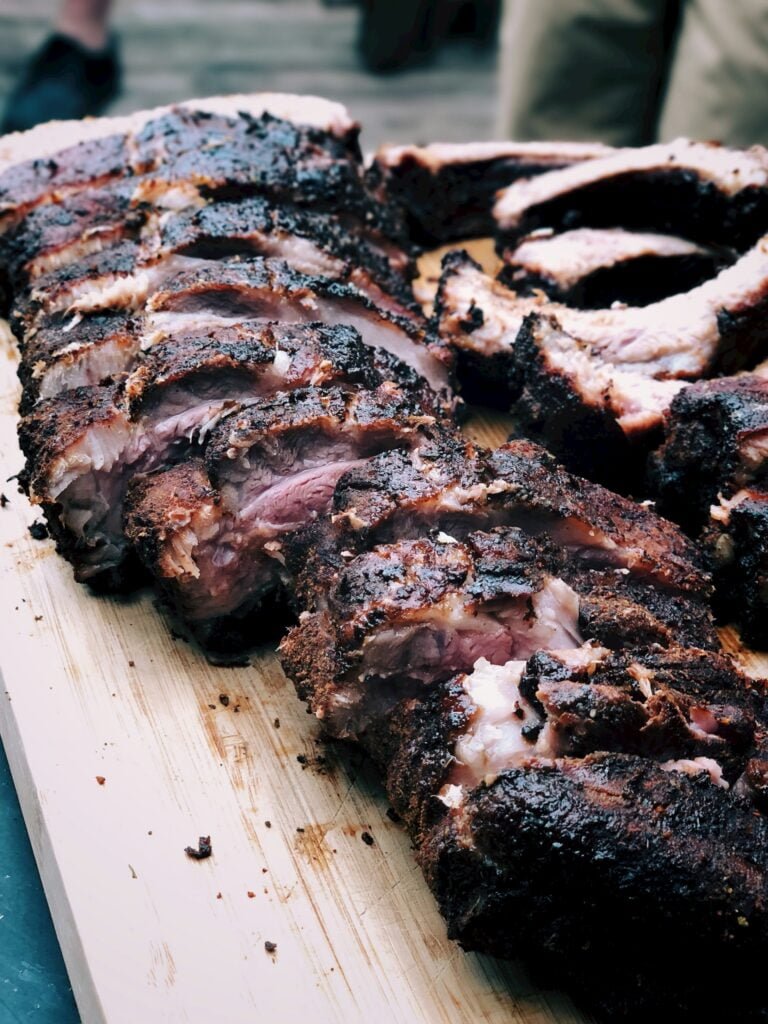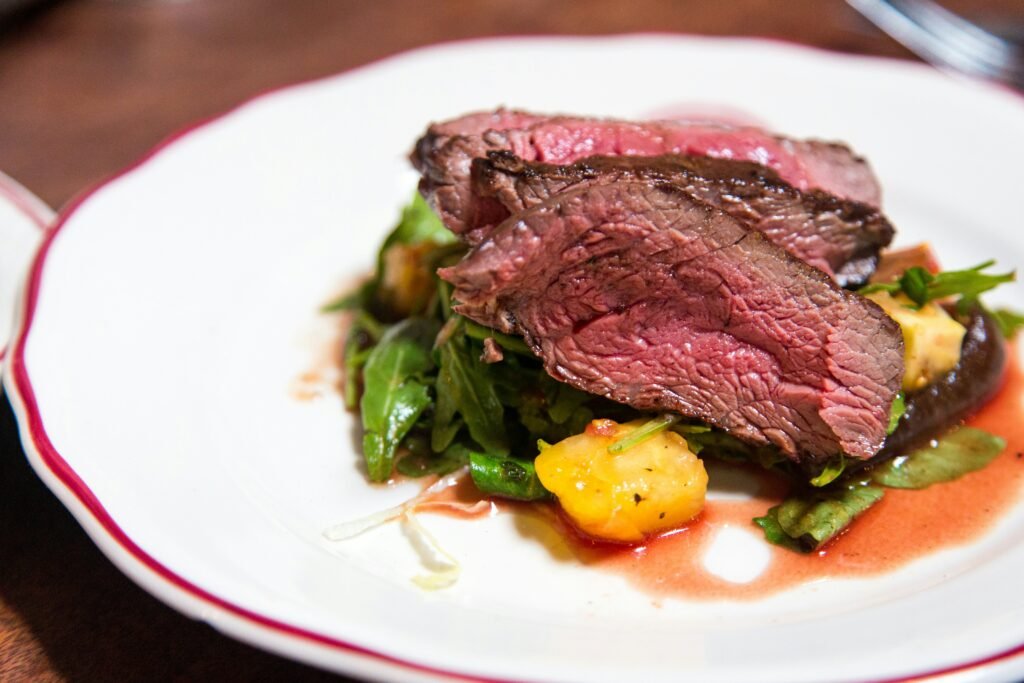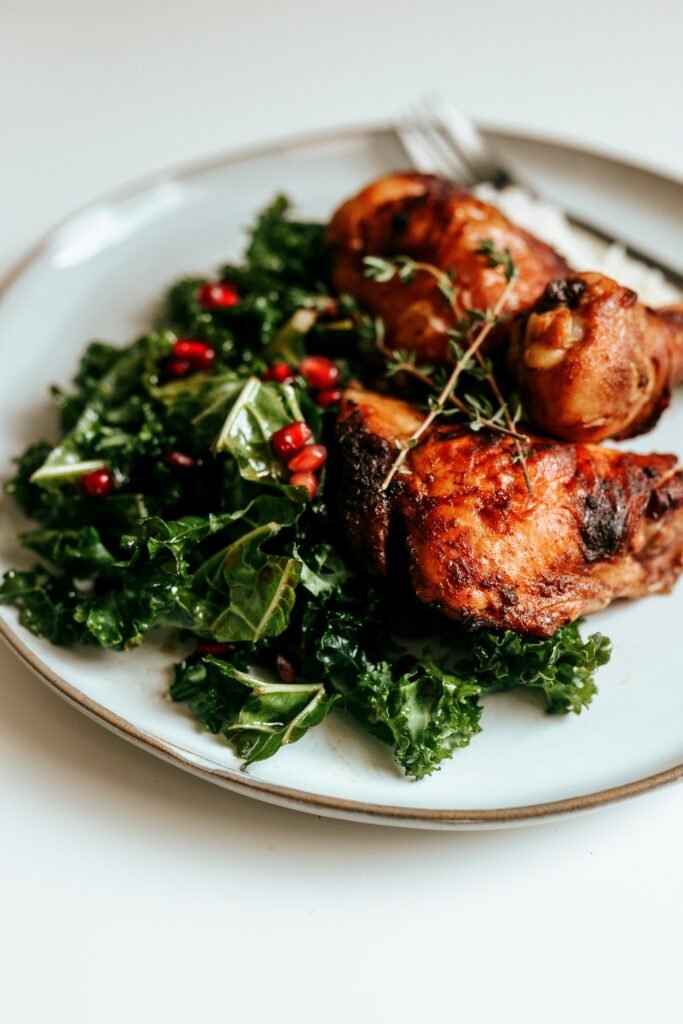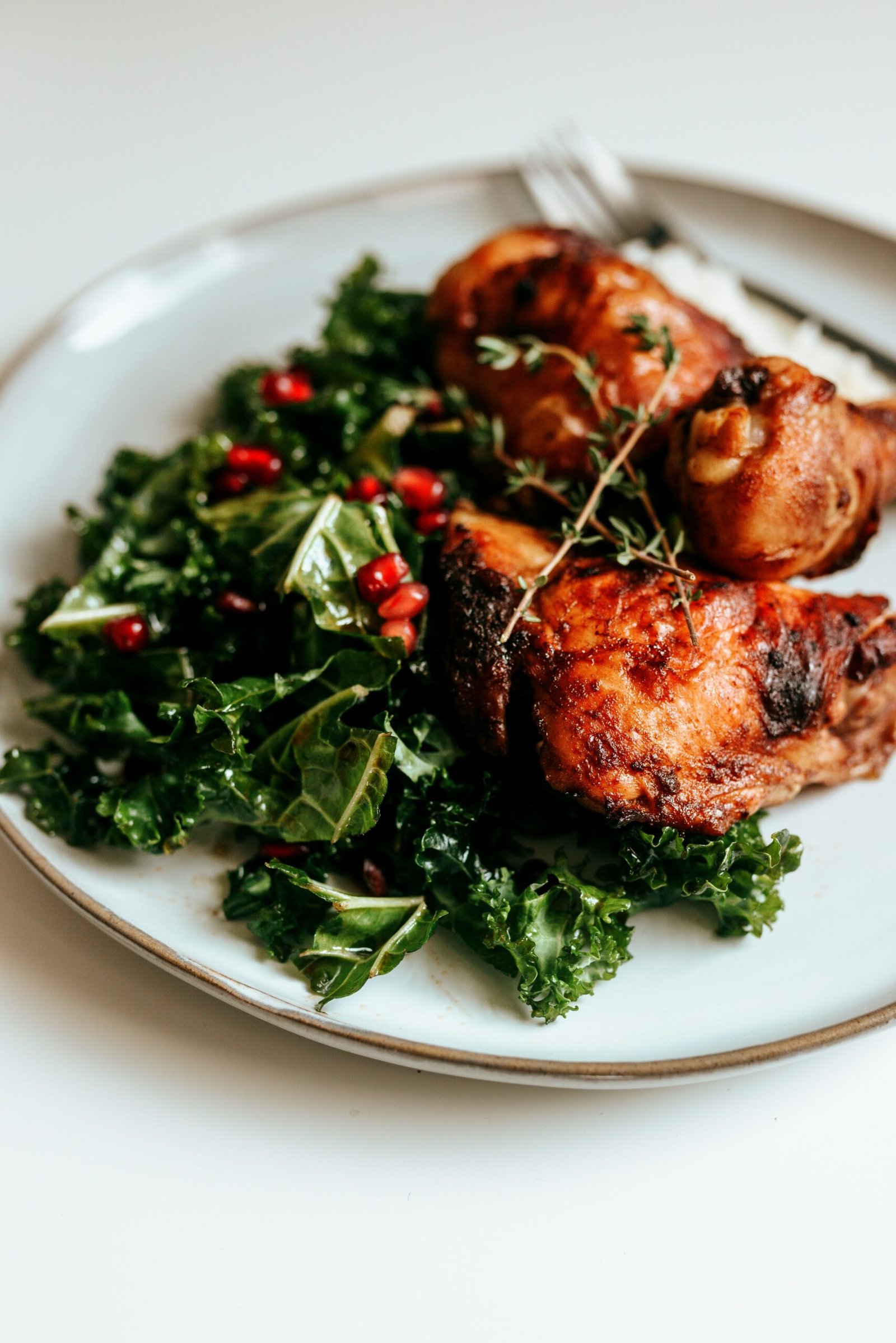Have you ever stood over your stove, wondering if the chicken on your grill is fully cooked or if that steak in the oven is still too raw? We have all been there, unsure of when exactly our meat is properly cooked. But fear not, because in this article, you will learn some foolproof ways to determine if your meat is done to perfection. From checking the internal temperature to pressing on the meat’s surface, these simple tips will ensure you never serve undercooked or overcooked meat again. So grab your apron and get ready to become a meat-cooking pro!
Understanding Different Types of Meat
Identifying Varieties of Meats
When it comes to meat, there is a wide array of choices available. From beef to pork, chicken to lamb, each type has its unique taste and texture. It’s important to be able to identify the different varieties of meats to ensure that you cook them properly. For example, beef is known for its rich flavor and can be cooked to various levels of doneness, while pork is often cooked until fully cooked to avoid any health risks.
Knowing the Differences in Cooking Requirements
Different types of meat require different cooking techniques and temperatures. Some meats, like poultry, need to be cooked thoroughly to avoid potential foodborne illnesses, while others, like beef, can be cooked to different levels of doneness to suit personal preferences. Understanding these differences is crucial to ensuring that your meat is cooked correctly and safely.
Importance of Cooking Meat Correctly
Health Risks of Undercooked Meat
Undercooked meat poses significant health risks. When meat is not cooked to the appropriate internal temperature, harmful bacteria and parasites may still be present, leading to food poisoning and other illnesses. These risks can be especially dangerous for vulnerable groups such as pregnant women, young children, and elderly individuals. It is essential to cook meat properly to kill any potential pathogens and ensure it is safe to consume.
Flavor Differences in Undercooked and Overcooked Meat
Cooking meat to the correct level of doneness not only ensures safety but also affects the flavor and texture of the meat. Undercooked meat may have a raw or unpleasant taste, while overcooked meat can become dry and tough. Achieving the perfect level of doneness enhances the natural flavors of the meat and creates a juicy and tender texture. It’s important to strike the right balance to enjoy the best possible flavor.

Using a Meat Thermometer
How to Use a Meat Thermometer
A meat thermometer is a valuable tool for determining the internal temperature of cooked meat accurately. To use a meat thermometer, start by inserting the probe into the thickest part of the meat, making sure it doesn’t touch any bones or fat. Wait for a few seconds until the reading stabilizes, and then check the temperature displayed on the thermometer. This reading will help you determine the doneness of the meat and ensure it reaches a safe internal temperature.
Identifying the Correct Internal Temperatures for Different Meats
Different types of meat have different recommended internal temperatures to ensure they are cooked safely and at the desired level of doneness. For example, chicken should reach an internal temperature of 165°F (74°C) to eliminate any potential bacteria, while a medium-rare steak should have an internal temperature of around 135°F (57°C). It is important to refer to a reliable source for specific temperature guidelines for each type of meat to achieve optimal results.
Time-Based Methods for Judging Meat Doneness
Estimating Cook Times Based on Meat Type and Weight
Estimating cook times based on meat type and weight can be a helpful guideline, especially for those who are not comfortable using a meat thermometer. Different cuts and sizes of meat will require different lengths of cooking time. For example, a large whole chicken will take longer to cook than a thin steak. By understanding the approximate cook times for different meats, you can have a general idea of when the meat might be done.
Identifying Issues with Time-Based Cooking Methods
While time-based cooking methods can be convenient, they do have limitations. External factors such as the accuracy of the oven temperature, the thickness of the meat, and variations in individual ovens can all affect the actual cooking time. Relying solely on cook times without considering other indicators of doneness can lead to overcooked or undercooked meat. Time-based methods can be a helpful starting point, but it’s important to use additional methods to ensure the meat is properly cooked.

Sight-Based Methods for Identifying Doneness
Recognizing Changes in Meat Color
As meat cooks, its color changes significantly. Raw meat tends to have a vibrant, reddish hue, while cooked meat transitions to a brown or gray color. This visual transformation can be a valuable indicator of doneness. However, it’s important to note that the color alone is not always a foolproof method. Some meats, like beef, can remain red even when cooked to a safe internal temperature. Therefore, using color as a sole indicator should be complemented by other methods.
Understanding How Meat Texture Changes as It Cooks
The texture of meat changes as it cooks due to the breakdown of proteins and the evaporation of moisture. Raw meat is usually soft and pliable, while cooked meat becomes firmer and more tender. The texture can give clues about the doneness of the meat. For example, a rare steak will be softer and more juicy compared to a well-done steak, which will be firmer and drier. By paying attention to the changes in texture, you can determine if the meat has reached your desired level of doneness.
Touch-Based Methods for Identifying Doneness
Understanding the Finger Test Method
The finger test method is a touch-based technique that can help determine the doneness of meat. By comparing the firmness of the meat to different parts of your hand, you can get a rough estimate of its internal temperature. For example, if you touch the tip of your thumb to your index finger and press the fleshy area below your thumb, it will feel similar to meat cooked to a rare level of doneness. As you progressively touch your thumb to the other fingers, the level of firmness increases, mimicking well-done meat. However, it’s important to note that this method is not as precise as using a meat thermometer.
Identifying the Limitations of Touch-Based Methods
While touch-based methods can provide some insight into the doneness of meat, they do have limitations. Factors such as the thickness and type of meat, individual hand sensitivity, and personal preference for firmness can vary, making it challenging to rely solely on touch to determine doneness. Additionally, some cuts of meat may have different levels of inherent tenderness, further complicating the accuracy of touch-based methods. It’s recommended to use touch as a supplementary method along with other indicators of doneness.

Grill and Barbecue Specifics
Recognizing the Difference in Cooking on a Grill
Grilling is a popular cooking method that imparts a distinctive smoky flavor to meats. When grilling, it’s important to understand the direct and indirect heat zones to achieve the desired doneness. Direct heat refers to placing the meat directly above the heat source, resulting in high heat and searing, while indirect heat involves cooking the meat away from the direct flames for more gentle and even cooking. By mastering these zones and adjusting the cooking time accordingly, you can create delicious, grilled meats with the perfect level of doneness.
Understanding How Smoker Temperatures Factor into Cooking
Smoking is another technique commonly used in barbecue cooking. When smoking meats, it’s essential to monitor and control the temperature of the smoker to ensure even cooking and proper doneness. Each type of meat requires different smoker temperatures to achieve optimal results. For example, low and slow smoking at around 225°F (107°C) is commonly used for tougher cuts of meat like brisket, while higher temperatures are suitable for shorter cooking times, such as smoking chicken at around 300°F (149°C). Understanding smoker temperatures is key to achieving tender, flavorful, and properly cooked meats.
Oven Cooking Specifics
Recognizing Different Oven Settings
Oven cooking provides a reliable and controlled environment for cooking meat. Understanding the different oven settings can help you achieve the desired doneness. For example, using the bake setting with even heat distribution is great for roasting larger cuts of meat, while the broil setting provides high, direct heat for quick searing. Additionally, convection ovens offer the benefit of circulating hot air, promoting even cooking and browning. By utilizing the appropriate oven settings for your specific meat and desired level of doneness, you can achieve succulent, oven-cooked perfection.
Qualities of Properly Cooked Meat in the Oven
Properly cooked meat from the oven should exhibit certain qualities. It should have an appetizing golden brown color, achieved through proper heat distribution and caramelization. The internal temperature should reach the recommended level for the specific type of meat to ensure it’s safe to eat. The meat should also be tender and moist, indicating proper cooking without excess dryness. By ensuring these qualities, you can enjoy a delectable oven-cooked meal that is both flavorful and safe to consume.
Pan Frying and Sauteing Specifics
Managing Variable Heat in Pan Cooking
Pan frying and sautéing involve cooking meat on a stovetop using a frying pan or skillet. The key to successful pan cooking is managing variable heat levels. Start by preheating the pan over medium-high heat, allowing it to become hot enough to sear the meat properly. Once the meat is added, reduce the heat to medium or medium-low to cook it through without burning the surface. Adjusting the heat as needed and flipping the meat at the right time are important factors in achieving the desired level of doneness.
Techniques for Testing Doneness When Pan-Frying
When pan-frying meat, there are several techniques you can use to test for doneness. Along with using a meat thermometer, you can make a small incision in the thickest part of the meat to check the color and see if any juices run clear. Alternatively, gently pressing the meat with a spatula can help determine its firmness. The more resistance it offers, the more cooked it is. By utilizing these techniques and being attentive to the visual and tactile cues, you can ensure your meat is properly cooked when pan-frying.
Slow Cooking and Stewing Specifics
Testing for Doneness in Slow-Cooked Meats
Slow cooking and stewing methods result in tender, melt-in-your-mouth meat that is packed with flavor. When using these techniques, it’s important to test for doneness to ensure the meat is thoroughly cooked. Slow-cooked meats should break apart easily with a fork when they are done. The meat should be tender, allowing it to be pulled apart effortlessly. Additionally, the internal temperature should reach the recommended level for the specific type of meat to ensure it’s safe to eat. By testing for these indicators, you can savor perfectly cooked slow-cooked and stewed meats every time.
Understanding How Low Heat Affects Meat Cooking Times
Low heat is a characteristic element of slow cooking and stewing. Cooking meat at low temperatures for an extended period allows collagen to break down, resulting in tender and flavorful meat. However, it’s important to note that low heat significantly extends the cooking time compared to other methods. Be prepared to allow enough time for the meat to cook thoroughly and reach the desired level of doneness. Planning and patience are key when utilizing slow cooking and stewing techniques to achieve delectable and tender meat dishes.
By understanding the different types of meat, the importance of proper cooking, and utilizing various methods to determine doneness, you can confidently prepare meat dishes that are both safe and delicious. Whether you’re grilling, oven-cooking, pan-frying, or slow-cooking, mastering the art of cooking meat allows you to savor every bite with satisfaction. So next time you’re in the kitchen or firing up the grill, remember to cook your meat with care and precision, and enjoy the mouthwatering results. Happy cooking!

